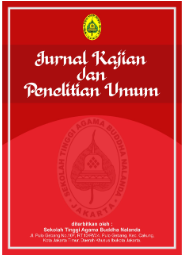Prediksi Disleksia pada Anak menggunakan Metode Naive Bayes
DOI:
https://doi.org/10.47861/jkpu-nalanda.v2i5.1287Keywords:
Dyslexia, Expert System, Naïve BayesAbstract
Dyslexia is a neurological disorder that affects a person's ability to read, spell, and understand words with a level of difficulty that is not in accordance with their level of intelligence or education. It is a lifelong condition that can affect the way the brain processes information related to reading and written language skills. This study uses the Naïve Bayes method. is a method that uses probability and statistical calculations. And the advantage of the Naïve Bayes classification is that this method only requires a small amount of training data to determine the parameter estimates needed in the classification process. The purpose of this study is to find out how to solve the diagnosis or problems arising from dyslexia in children made in an expert system using the Naïve Bayes method and to find out the results of making the system can replace an expert into a computer so that the diagnosis is easier and faster. The results of this study are by selecting the symptoms that occur in children according to what is experienced, the system can find out the child or patient can be diagnosed quickly according to consultation with a dyslexia expert.
References
Ahmad, N. (2018). Membangun database arsip persuratan menggunakan pemrograman PHP dan MySQL. CV. Jejak Publisher.
Ahmad, S. A. (2023). Implementation of the certainty factor method in the expert system diagnosis of childhood disorders. Jurnal Teknik Informatika, Universitas Muhammadiyah Ponorogo.
Ardhian, E. (2022). Deteksi dini anak disleksia dengan metode support vector machine. Jurnal Teknik Komputer dan Informatika, Politeknik Negeri Bandung.
Budiharto, W., & Suhartono, D. (2016). Artificial intelligence: Konsep dan penerapannya. Andi Offset.
Cindy Fitri Liana. (2021). Sistem pakar diagnosa penyakit disleksia pada anak dengan metoda Naïve Bayes berbasis web. Jurnal Ilmu Komputer dan Bisnis, STMIK Pelita Nusantara Medan.
Eko Siswanto. (2021). Kupas tuntas pemrograman PHP. Yayasan Prima Agus Teknik.
Hayadi, B. H. (2018). Sistem pakar. Deepublish.
Janner, S. (2012). Rekayasa perangkat lunak. Penerbit Andi.
Kristianti Dewi. (2015). Strategi mengatasi kesulitan belajar ketika murid Anda seorang disleksia. Proceeding Seminar Nasional PGSD UPY. Asosiasi Disleksia Indonesia.
Kurniawan, D. (2020). Pengertian XAMPP lengkap dengan cara menggunakannya (terbaru). Niagahoster.Co.Id.
Linda Marlinda. (2021). Sistem pakar: Perancangan dan pembahasan metode chaining, certainty factor, fuzzy logic. Graha Ilmu.
Meza Silvana. (2020). Pemanfaatan metode Naïve Bayes dalam implementasi sistem pakar untuk menganalisis gangguan anak. Jurnal Sistem Informasi, Universitas Andalas.
Minarni, & Hidayat, R. (2013). Rancang bangun aplikasi sistem pakar untuk kerusakan komputer dengan metode backward chaining. Institut Teknologi Padang, 1(1), April.
Rosa, A. S., & Shalahuddin, M. (2018). Rekayasa perangkat lunak terstruktur dan berorientasi objek. Informatika.
Syah Zanul Husna. (2023). Implementasi sistem pakar diagnosis autisme pada anak menggunakan metode Naïve Bayes. Jurnal Sistem Informasi, Universitas Islam Negeri Sumatera Utara.
Yakub. (2012). Pengantar sistem informasi. Graha Ilmu.
Downloads
Published
How to Cite
Issue
Section
License
Copyright (c) 2024 Siti Alyunita Mega Lestari, Akim M.H. Pardede, Magdalena Simanjuntak

This work is licensed under a Creative Commons Attribution-ShareAlike 4.0 International License.








